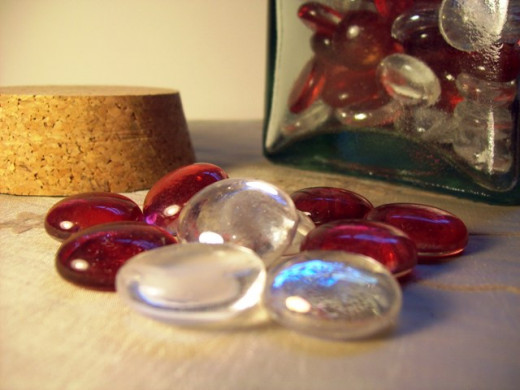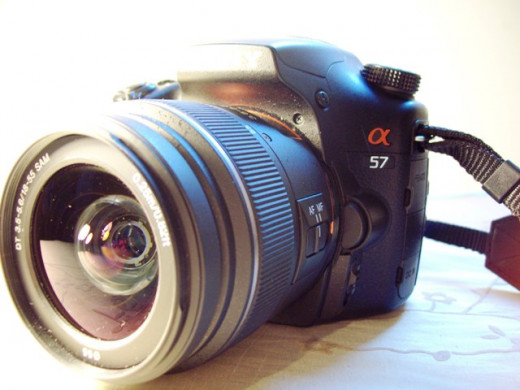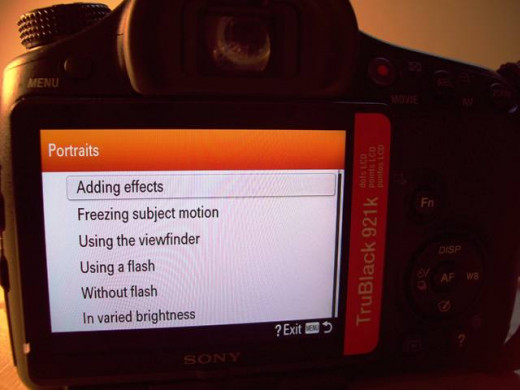- HubPages»
- Technology»
- Consumer Electronics & Personal Gadgets»
- Portable Electronics»
- Digital Cameras
Buying and Upgrading to a DSLR Camera

Upgrading Your Camera
Thinking about upgrading to a DSLR?
Stop thinking and just do it.
With the world we live in, images mean a lot – especially if you do a lot of writing or working online. Words, valuable as they are, will only get you so far.
Why should you invest in a DSLR, though?
I hadn’t thought about it when I was new to the online writing world. I just figured I’d take the best pictures I could with my little Kodak point and shoot camera I had.
Oh, woe is me. I had no idea – no idea – what I was missing.
DSLR is short for Digital Single Lens Reflex. I won’t get into all the technical details of what that means, but I can tell you, they make a difference. I’ll list several good reasons why it’s good to invest in a good DSLR.
DSLR Image Quality
First and foremost, the one thing you’ll notice is that when you get your DSLR, the image quality of the pictures you take is almost phenomenal in the difference.
Take a look at these two pictures. Can you tell which one I took with my DSLR and which one I took with my old Kodak? Don’t worry if it doesn’t seem totally obvious at first.


If you guessed that the first image was with my DSLR and the second one was with my Kodak, you’re correct. It might be a little hard to tell though, because once you resize images for the internet, sometimes you lose quality anyways.
It’s much easier to focus on things that are close up and the detail is unparalleled. My Kodak couldn’t get any closer than what I did here and even then, it had a hard time focusing - so it focused on almost everything.
The second picture is more grainy and though more things are "clear," with the first image, you could say it's "ultra-focused" on the gems. (I could change the settings so that the background is clearer, but I just want to make the point that the images are different.)

Do you own a DSLR?
Greater Image Control with DSLRs
When you take a picture with a point and shoot camera, you can manipulate some things: the white balance settings, focus (at least somewhat), and a few other things.
But with a DSLR, you can use it on the automatic settings, but the fun really begins when you use the manual settings.
You can control the aperture, focal length, shutter speed, exposure compensation, and ISO settings easily. With the typical point and shoot, you don’t have much control over those types of settings.
Things that are common to both types of cameras, like white balance, are better-controlled with a DSLR. You can adjust it for fluorescent lighting, sunlight, shade, cloudy days, warm incandescent, cool incandescent and much more. Thus, the variety of options on a DSLR gives you that much more opportunity to produce that perfect image.
In addition, you can also use a variety of modes to adjust for various lighting situations. Of course, you can set the camera to automatic – using the SCN function - you can tell the camera if you’re doing a landscape picture, a portrait, a fast-moving scene and so forth. However, the automatic settings only get you so far.
If you change modes to “P” – program auto – you can set everything except aperture and shutter settings.
Changing to “A” – aperture priority – lets you adjust the aperture, which allows you more control of what stays sharp and what stays blurry.
If you switch to “S” – shutter priority – you can control shutter speed. You know those silky waterfall pictures? Photographers use their shutter speeds to create that effect, using a slower shutter speed (among other settings).

Interchangeable Lenses
With DSLRs, it’s easy to purchase different lenses for the camera body.
Thus, if you like doing close-ups, you can get a lens that will help you do just that. If you prefer close up images of far-away objects, a telephoto lens will do you well.
I own a Sony α57, and it came with a book that gives you at least 30 different options for various types of lenses.
The sky’s the limit for what you want to do: macro pictures, portraits, distance and everything in between.
Get a Great Deal on a Sony DSLR

Tutorials
Yes, you actually get tutorials that help you compose the best possible picture on a DSLR camera.
If you look at the photo below, I have an LCD screen on my camera. It has a “?” button and when you push it, it will take you to a screen that guides you through the settings upon which you have the camera set.
Thus, if you have it on an automatic setting, SCN, and let’s say you have the camera set to “portrait,” it’ll give you pointers on how best to take a good portrait picture. It’ll tell you about the lighting and framing guidelines as well as pointers on using the flash.
If you are on a manual setting, the “?” button will guide you through those settings, helping you to set them correctly so that you don’t get an underexposed or overexposed picture or get too much blur.

Rechargeable Battery
With the point and shoot cameras, how often do you need to change out the batteries? It seems like every few times I go to use my old Kodak, I have to change the batteries.
What’s neat about many DSLRs is that the battery comes with its own charging pack. The LCD screen allows you to easily see how much battery power you have left.
Thus, if you have 22% power left, you’ll know you need to charge the battery fairly soon, but that it’s not going to die on you immediately. After an hour and a half of charging, you're ready to go again.
Cool Effects
If you take a look at the picture below, there’s a setting on some DSLRs that allow you to filter out colors, except the one you choose. In this example, I told the camera to only focus on yellow colors, while the rest remain black and white. I’ve created some interesting images that way. There are other settings, too, such as high-contrast black and white, a soft focus, posterization, and more.

Computer Updates For Your DSLR
DSLR cameras are machines. They have small computers in them. Thus, every so often the manufacturer will come up with an update and you can download these updates onto your camera. This is a great way to keep up with new developments in the photography world.
Be a “Real” Photographer
There’s nothing like that feeling when you’ve mastered the settings on your camera and you feel like a real photographer. I studied (and am still studying) the field of photography and am well on my way to being a professional photographer.
With only a point and shoot camera, however, it’s tough to convince that bride at her wedding that you’re the real deal. Sure, a good point and shoot has its place, especially if you’re on the go a lot and you don’t want to deal with a cumbersome camera all the time. A good point and shoot is a great back-up to have, as well. But the DSLR will take you to the next step in photography.


About My Camera
A little while back, I purchased a Sony α57. After a lot of research, this one appeared to meet my needs. I can say that I am hooked on Sony and in love with my camera. I now take it wherever I go and I’m always playing with the settings to come up with new and exciting images.
Yes there are the Canons and the Nikons, but I decided to give Sony a chance. I have not been disappointed.
While it’s not the priciest camera out there, it is a great camera for anyone wanting to get started in serious photography and for able amateurs.
The interesting thing about the camera body itself is that a lens is probably more important than the actual camera body.
If you’re undecided between a more expensive camera body or a high quality lens, I’d go for the less expensive camera body and the higher quality lens. After all, what the camera sees is what is telling in your photos. If you don’t have a great lens, the resulting photo won’t be as good as it could be.
© 2012 Cyn Lee








